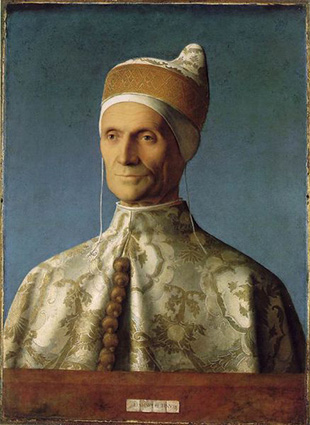












Doges of Venice were elected for life by the city-state's aristocracy. Commonly the person selected as Doge was the shrewdest elder in the city. The Venetian combination of elaborate monarchic pomp and a republican (though 'aristocratic') constitution with intricate checks and balances makes La serenissima Venice a textbook example of a crowned republic.
According to the chronicler John the Deacon, author of the Chronicon Venetum ("Chronicle of Venice"), written about AD 1000, the office of doge was first instituted in Venice about 700, replacing tribunes that had led the cluster of early settlements in the lagoon. Whether or not the first doges were technically local representatives of the Emperor at Constantinople, the doge, like the emperor, held office for life and was similarly regarded as the ecclesiastical, the civil and the military leader, in a power structure termed caesaropapism.
According to the chronicler John the Deacon, author of the Chronicon Venetum ("Chronicle of Venice"), written about AD 1000, the office of doge was first instituted in Venice about 700, replacing tribunes that had led the cluster of early settlements in the lagoon. Whether or not the first doges were technically local representatives of the Emperor at Constantinople, the doge, like the emperor, held office for life and was similarly regarded as the ecclesiastical, the civil and the military leader, in a power structure termed caesaropapism.
By Appointment
DE FERRANTI
South Park Studios - Suite 10
88 Peterborough Road, London SW6 3HH
United Kingdom